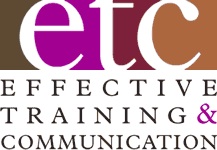The last two months we’ve discussed powerful audience-centric presentation Introductions and Summaries, as if the two book ends holding your presentation together. So, now let’s focus on what’s left – your powerful Message in the Middle.
As we’ve discussed, your Intro and Summary account for 15 – 20% of your total presentation time, including Q&A. Now, it’s time to ‘tell ‘em’ your message for 80 – 85% of your time, while projecting credibility, competence and confidence.
Recalling the Main Point/Sub Point organizational strategy from a previous article, you now turn that plan into action. For each Sub Point in the body of your presentation, ask yourself what information the audience needs and wants to hear to totally understand and accept it. Every fact you could share must pass the ‘Who cares Test’ … and the ‘Who’ isn’t you. It’s them.
You have a lot of content options in your Presenter’s Tool Kit to consider as you build out those Sub Points. Chief among them are statistics, quotes, examples, anecdotes, expert testimony, comparisons and analogies.
- Since management-speak is all about numbers, much of your body may be statistics. And while statistics never lie, statisticians do often and well. So, make sure the stats are clear and relevant for your audience. The more you need to explain the significance of a stat, the less effective it probably is.
- Err on the side of brevity. Most audience members want the 30,000-foot big picture anyway. A major data dump inflicting death by numbers can kill your momentum and enthusiasm. With a ‘Less Is More’ strategy, your fallback is always ‘If they want more details, they’ll ask for them.’ Just be sure to have the data available if they do ask.
- When using a quote, indicate the author’s background, except where it’s obvious. For example, ‘Sales is all about asking, not telling’, Buck Rogers … might not mean much to the audience unless you tell them that Buck Rogers was the SVP of Sales at IBM in the ‘80s. When in doubt, answer their question ‘Who’s that?’
- Stories can be memorable; Varsity Presenters are usually great storytellers. But, be sure your stories, examples or anecdotes are short, focused and clearly connected to a point you’re making. ‘Less Is More’ works here, too.
- Another component of your message is the language you use itself. Remember to speak their language, especially if they don’t speak yours. Use simple, conversational audience-centric words, phrases and jargon. If you must use an acronym, go beyond spelling it out and define in in simple English.
- Learn a simple technique from the Varsity Presenters. Instead of connecting Sub Points in a linear manner, ‘A’ – ‘B’ – ‘C’, reconnect each to your Main Point to reinforce it, ‘A’ – MP – ‘B’ – MP – ‘C’. The rationale is the more often they hear a concept, the greater the chance they’ll remember it.
While you may not have the time to do it right, you will have to find the time to do it over when your presentation misfires or the big dog isn’t happy with it. Whatever amount of time you can justify creating your message, spend 25% of it on the planning details we’ve already discussed, 25% on your Power Intro and Summary, 40% on building out your ‘Message in the Middle’ and only 10% on your PowerPoint slides.
Next month, we’ll share more Message in the Middle Best Practices to help you accomplish your presentation outcomes.

